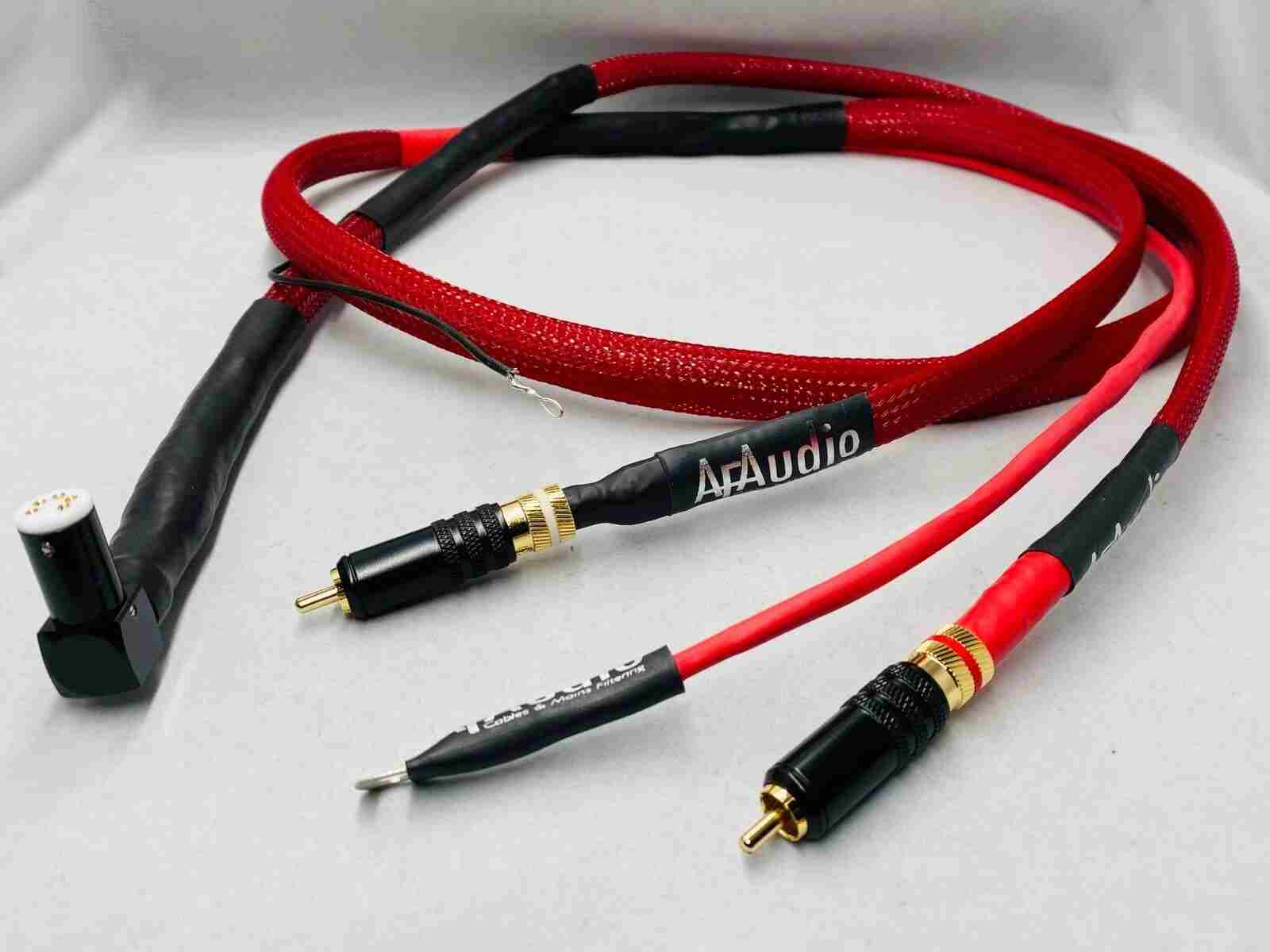


New guide explains how RCA audio cable works—history, science, and pro tips for crystal-clear analog sound in modern setups.
Burton on, Staffordshire– 26 June 2025 — From vinyl-spinning hobbyists to multi-room home-theater enthusiasts, millions of listeners still rely on the humble RCA connector every single day. Yet even as HDMI, USB-C, and Bluetooth dominate headlines, one deceptively simple question continues to trend on search engines, forums, and customer support calls alike: “How does RCA audio cable work?”
To answer it once and for all, AfAudio , a global leader in consumer-electronics education, today released a 10-page illustrated guide that explains RCA technology from the inside out—covering history, signal science, best-practice cabling, and troubleshooting tips. The free resource aims to help everyone from first-time apartment dwellers wiring a hand-me-down stereo to professional studio engineers integrating vintage gear into digital workflows.
“If you grew up in the streaming era, a red-and-white cable can look almost mysterious,” said AfAudio, Chief Content Officer at AfAudio. “Conversely, if you started your career in the cassette age you may take RCA for granted and miss opportunities to optimize signal quality. Our guide breaks that cycle by showing—step by step—how and why RCA audio cables still matter.”
Developed by the Radio Corporation of America in 1942 to simplify phonograph hookups in theaters, the RCA connector quickly migrated to consumer TVs, VCRs, CD players, and early game consoles. Its key advantage was cost-effective, color-coded simplicity: one male plug for each channel, one female jack on the device, twist of the wrist—done.
Seventy-plus years later, the same two-lead design remains the backbone of analog stereo. According to market-research firm TechInsights, global annual sales of RCA audio cables exceeded 140 million units in 2024, driven by record-player resurgences, boutique headphone amplifiers, DJ consoles, and classic A/V receivers that refuse to die. That durability underscores the recurring question, “How does RCA audio cable work?”
The guide uses cross-section diagrams and plain English to illustrate the cable’s three fundamental elements:
Center Conductor (Signal Pin)
A copper or copper-alloy wire carries the unbalanced analog voltage that represents audio. In stereo pairs, the red plug transmits the right channel while white (or sometimes black) handles the left channel.
Dielectric Insulation
Polyethylene, Teflon, or foamed polypropylene surrounds the conductor, preventing short circuits and preserving signal integrity across frequencies ranging roughly 20 Hz – 20 kHz.
Shield/Braid & Outer Jacket
A spiral copper braid or aluminum-mylar foil envelopes the dielectric, connecting to ground at both ends. This shield blocks radio-frequency interference (RFI) and electromagnetic hum, crucial when RCA runs parallel to power cords.
Because each plug carries only one channel, a stereo hookup requires two cables. Add a third (yellow) and RCA handles composite video—a design still found on retro consoles and security cameras.
When music leaves a source component (say, a turntable preamp) its alternating voltage enters the RCA center pin. That tiny voltage, typically less than two volts peak-to-peak, travels down the conductor and arrives at the amplifier’s RCA input. The outer shield simultaneously provides a zero-volt reference path—“ground”—completing the circuit.
Unlike balanced XLR connections, RCA is unbalanced, meaning the signal and ground share the same reference. Over short distances this is perfectly adequate; beyond about six meters (20 ft) susceptibility to induced noise increases markedly. The guide dedicates an entire section to mitigating these issues with thicker gauges, dual-braid shielding, and ferrite clamps.
Backward Compatibility
Millions of legacy devices—from 1980s cassette decks to early-2000s DVD players—output only RCA. Replacing them wholesale would be costly and environmentally wasteful.
Dedicated Analog Purism
Vinyl aficionados often prefer an all-analog path. Converting to digital (via DAC/ADC) can introduce latency and coloration they find objectionable.
Cost and Availability
A reliable two-meter RCA pair costs under $10, a fraction of audiophile USB or optical cables.
DIY & Customization
Soldering your own RCA interconnects is easier than crimping HDMI or DisplayPort, making it popular among audio hobbyists and pro-totypers.
Specialized Equipment
Outboard tube preamps, guitar pedals, and many synth modules still feature RCA for their warm sonic character and simplicity.
“Gold-plated plugs always sound better.”
Gold resists oxidization but offers minimal conductivity improvement over nickel. Focus instead on build quality and proper impedance.
“Longer = louder.”
Cable length has no effect on volume, only on potential signal loss and noise pick-up.
“All RCA cables are identical.”
Materials, shielding density, and termination quality vary widely. Poorly molded barrels can loosen over time, resulting in crackle or channel dropout.
Keep Runs Short: Aim for under 3 m (10 ft) whenever possible; consider active DI boxes for stage setups beyond that.
Route Smartly: Cross audio cables at 90° angles to AC mains to minimize induced hum.
Label & Color-Code: Especially in racks with multiple sources, match the right-channel plug (red) to right-channel input every time.
Regular Maintenance: Unplug and clean contacts annually with isopropyl alcohol to prevent oxidation.
Invest Where It Counts: Spend more on phono-stage cables (low-level signals) than on line-level connections from a CD player.
Mila Fernandez, Broadcast Engineer, KQX Radio:
“Your section on ground loops solved a buzz that plagued our backup studio for months. The phrase how does RCA audio cable work never felt so empowering.”
Jonas Kim, Indie Musician & YouTuber:
“I blend a 1987 drum machine with modern DAW tracks. The guide’s unbalanced-to-balanced adapter chart saved me hours of trial-and-error.”
Ava Patel, Home-Theater Installer:
“Customers think RCA is obsolete, but older game consoles insist on it. The illustrations help me educate them—clean, quick, and professional.”
The full PDF, titled “RCA Audio Demystified: From 1940 to Hi-Fi”, is downloadable today at https://afaudio.co.uk. Complementary resources include a two-minute explainer video, printable pin-assignment poster, and an interactive quiz that awards discount coupons for premium braided cables.
Founded in 2011, AfAudio provides unbiased tutorials, certification courses, and technical support for over two million DIY audio and video enthusiasts worldwide. The company’s mission is simple: decode technology so everyone can enjoy great sound and vision without frustration.
AfAudio
Public Relations Manager
Phone: 07545 197766
Email: [email protected]
Website:https://afaudio.co.uk
